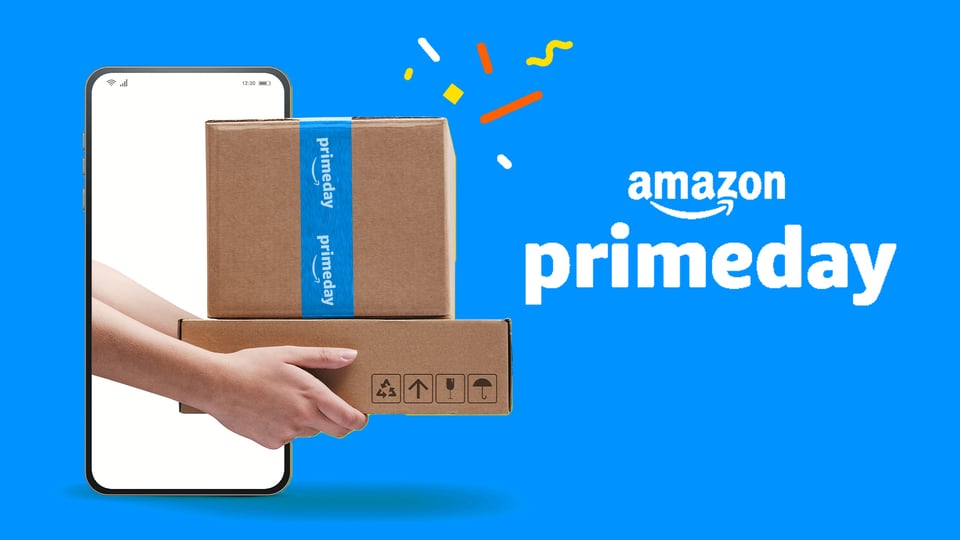Amazon's Prime Day Sale began as a celebration of the marketplace's 20th birthday in 2015 and has now become one of the biggest ecommerce events of the year. Billions of dollars are spent globally when Amazon Prime members shop for exciting deals across a wide range of product categories.
Eight years in, let's take a look at the growing success of the event.
Insights on product deals & sales
Amazon's Prime Day isn't an event for shoppers alone. Ecommerce brands and businesses significantly boost their sales volume due to a combination of Amazon's strategic marketing and compelling discounts.
More customers tend to shop during these Prime Day sales than they would otherwise. There is a noteworthy increase in unit sales in key categories during Prime Day. Here are the top five:
- 52% increase in home appliance sales
- 28% increase in housekeeping supplies sales
- 18% increase in electronic purchases
- 17% increase across apparel (fashion)
- A whopping 76% increase in office supplies purchases (aided by back-to-school shoppers)
Home, fashion, and beauty were the top-selling categories, and some of their top-selling deals were the Fire TV Stick, LANEIGE Lip Glowy Balm, Apple AirPods, and Bissell Little Green Portable Deep Cleaner.
How has Prime Day grown year-over-year?
The first day of 2023's Prime Day was Amazon's single-largest sales day in its history. The Top categories most purchased by Amazon Prime shoppers in 2023 were:
- Home Goods at 27%
- Household Essential at 26%
- Apparel & Shoes at 25%
- Consumer Electronic at 21%
- Beauty & Cosmetics at 20%
- Health & Wellness at 19%
Amazon Prime Day 2023 sales were up by 6.3% over 2022 for the two-day promotional period. The increase helped Amazon reach $12.7 billion, up from $11.9 billion in 2022, solidifying the brand as the dominant ecommerce giant.
Category sales before and after Amazon Prime Day
The combination of great deals and strategic event marketing led shoppers to make more purchases than ever before. Here's a quick look at the difference in sales volume between Prime Day and a normal selling day:
|
Item/Product |
July 1st |
July 12th |
Sales Percentage Increase |
|||
|
Air Purifiers |
Unit sales |
Revenue |
Unit sales |
Revenue |
Unit sales |
Revenue |
|
27,569 |
$3,157.27 |
28,258 |
$3,357.99 |
2% |
6% |
|
|
Building Toys |
Unit sales |
Revenue |
Unit sales |
Revenue |
Unit sales |
Revenue |
|
1,539 |
$49,832 |
2,381 |
$62,935 |
35% |
21% |
|
|
Headphones, Earbuds, & Accessories |
Unit sales |
Revenue |
Unit sales |
Revenue |
Unit sales |
Revenue |
|
350 |
$32,691 |
427 |
$49,882 |
18% |
34% |
|
Source: Jungle Scout Cobalt Data
P.S. Amazon's own Fire TV Stick (3rd Gen) was the top-selling product this Prime Day, with several million units sold.
How much do brands spend on Amazon advertising during Prime Day?
Amazon Prime Day 2023 amassed a record-breaking global revenue of $12.7 billion alongside a 6.1% year-over-year growth in the US, setting a new Prime Day record. While this sale offers sellers an exponential increase in sales and revenue, sellers spent approximately 14% of their income on Amazon ads during the 48-hour Prime Day window.
It's worth noting Amazon's cost of sales, or the number of ads needed to see a return on investment (ROI), was 9% lower in 2023 than in 2022. This factor may have driven higher seller engagement in the event, as 80% of Amazon sellers participated in Prime Day compared to 69% in 2022.
While participating in Amazon Prime Day can be relatively expensive, Amazon reportedly helped brands cover part of their external marketing costs. In 2023, Amazon subsidized the cost of Google search advertising, influencer marketing, and TikTok advertising by 10%.
However, brands are only eligible for this benefit if their out-of-network advertising efforts drive significant traffic to Amazon.
How did other marketplaces fare on Prime Day?
Several online retailers and marketplaces have been coming up with their annual sales events to compete with Amazon's near-monopoly on shopping during the Prime Day dates. However, in 2023, these competing platforms & retailers only experienced minor increases in traffic and purchases compared to 2022:
For example, Target only had a traffic increase of 26.9% from 42.3% the previous year, while Costco Wholesale Corp went down from 24.6% to 16.7%. However, Amazon’s traffic increase remained virtually unchanged, with 43.3% in 2022 and 43.0% on Prime Day 2023.
It's worth mentioning that this difference in sales and traffic is also affected by varying promotional strategies, as competitors were offering independent deals rather than directly competing with Prime during this period. However, since these marketplaces offered a week-long sale, buyers could focus on Amazon's two-day sale and capitalize on the short window for attractive discounts.
How does Amazon Prime Day attract shoppers?
Amazon Prime Day's record-breaking sale in 2023 solidifies its dominance as the best platform for discount-seeking buyers and opportunistic online retailers. The establishment employed steep discounts to trigger the inner bargain hunter and cause buyers to stock up on irresistible deals.
During the event, customers were compelled to purchase by exciting discounts such as:
- 14% off on electronics
- 12% off on apparel
- 12% off on toys
- 9% off on Home/Furniture
- 8% off on computers
- 7% off on appliances
- 6% off on sporting goods
- 5% off on TVs
These deals and Amazon's marketing efforts make the platform ideal for sellers looking to boost their revenue exponentially. However, the strategy for capitalizing on this opportunity involved rigorous advertising; otherwise, retailers run the risk of missing out on the Prime Day sales spike.
Fortunately, Amazon's out-of-network advertising subsidy, alongside the decreased cost of sales for a return on investment, makes advertising on Prime Day more possible. Depending on one's niche, vendors can experience an increase in sales from 2% to 34% or more.
Book a free consultation from our ecommerce experts!





